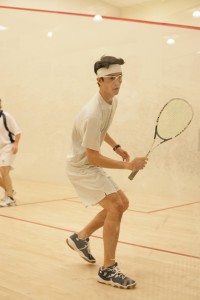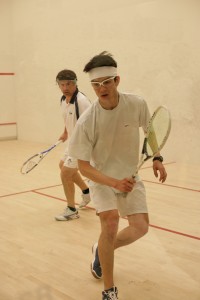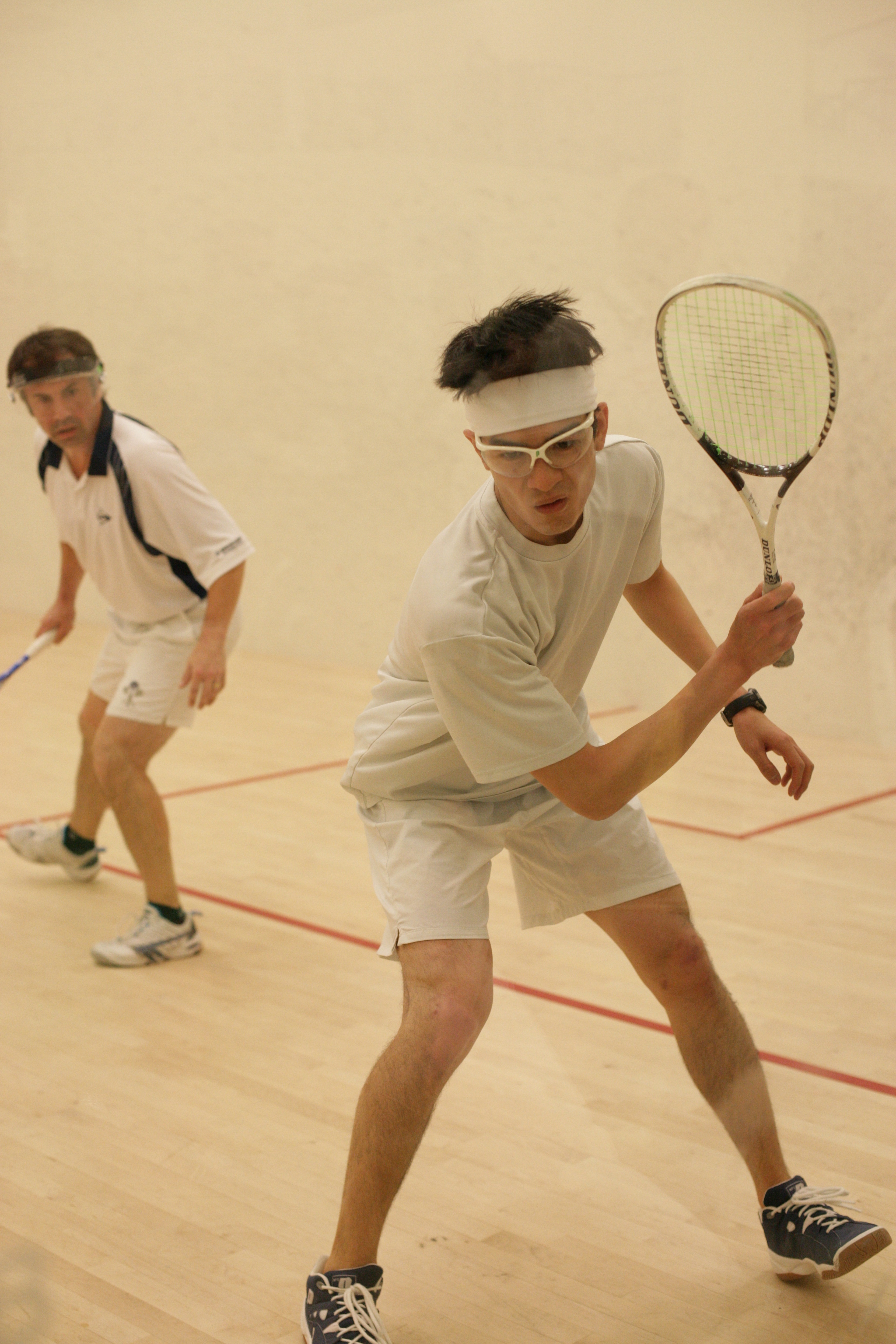
By Richard Millman, Director of Squash, Kiawah Island Club
Still much misunderstood by the rank and file club squash player, this is probably the most useful shot when you are in serious trouble in back corner Jail, other than when you are so desperate that you have to use the back wall boast.
Notice I have not mentioned the defensive boast. The three wall boast out of the back corner is an unmitigated disaster and leads invariably to the loss of the rally. That’s not to say that it shouldn’t be used in the back corner—just that it should never be used defensively—only as a change up when you have just enough time to turn defense into attack. It actually takes more space to play the boast than it does to play the straight drop.
Here are the main principles of hitting a straight drop from the back corner:
If you are dealing with a straight length (the easiest problem), you need to create enough racquet angle behind the ball to send the ball straight along the side wall. To do this you need to create space between yourself and the back wall so you have ‘swing space.’ Next you have to turn your body so that your racket hand shoulder is the closest part of your body to the back wall. If any other part of your body is between your shoulder and the back wall, you won’t be able to get enough leverage and angle behind the ball to get it straight.
If you think about it, in open court play with plenty of time, you normally line up the front of your shin with the ball when you hit it. In back corner Jail that won’t work at all, because you will then find your body sandwiched between your shoulder and the wall. Reaching back toward the ball across your body will create a racquet angle that directs the strike straight into the side wall.
 So for the straight drop option you have to line up the side of your calf muscle with the ball which requires that you plan to turn your body before you even approach the shot.
So for the straight drop option you have to line up the side of your calf muscle with the ball which requires that you plan to turn your body before you even approach the shot.
Another key element is to mentally rehearse what the ball is going to do and how far it is likely to rebound from the back wall. You can calculate this based on the speed, height and length of the incoming ball. If you watch and get a good general feel of these factors, you can turn away from the ball momentarily before it hits the floor, thereby getting ahead of the arrival of the ball, creating some time and therefore some extra time to execute the shot. This sort of time management that allows you to create some lead time is the way that leading players get ahead and create options.
When you execute the drop shot, you also need to choke up and open the racquet face in proportion to the degree of difficulty. The less the ball is going to come off the back wall, the more you will choke up and open. As a demonstration of this, try holding a normal grip and see what your range of movement with your wrist and forearm is like. Unless you have a very flexible wrist you will find a regular grip offers approximately a 180 degree range of motion. If you choke up to the neck of the grip you will find that increases to about 210. But if you choke up and make a quarter turn of the racquet more open (opposite directions for forehand and backhand) you will find that you are afforded almost a 360 degree range of motion. This clearly is a big advantage when you are dealing with very limited space.
 The closer the ball is to the back wall, the more you need to choke up and turn away from the ball. The ultimate is to actually pirouette in the opposite direction to which you are hitting the ball. In this way any ball can be straightened. If you do turn your head in the opposite direction, you need to use your imagination to track the ball while it is out of your field of vision and then re-gather it visually after you have used the mechanical advantage of the reverse head turn and choked up and opened the grip to get the ball straight.
The closer the ball is to the back wall, the more you need to choke up and turn away from the ball. The ultimate is to actually pirouette in the opposite direction to which you are hitting the ball. In this way any ball can be straightened. If you do turn your head in the opposite direction, you need to use your imagination to track the ball while it is out of your field of vision and then re-gather it visually after you have used the mechanical advantage of the reverse head turn and choked up and opened the grip to get the ball straight.
The energy transfer into the ball doesn’t come from the arm but from the legs, through the activity of beginning movement up the court into position for the next shot, momentarily before striking the ball. The movement away mustn’t detract from the energy transference into the ball, however, so you must keep your head (the main indicator of the direction of your balance) leaning toward the ball throughout the execution of the shot—even when you have your back toward the ball.
Next month—how to hit the straight drop from a difficult cross-court length, and how to avoid Jail in the first place!


